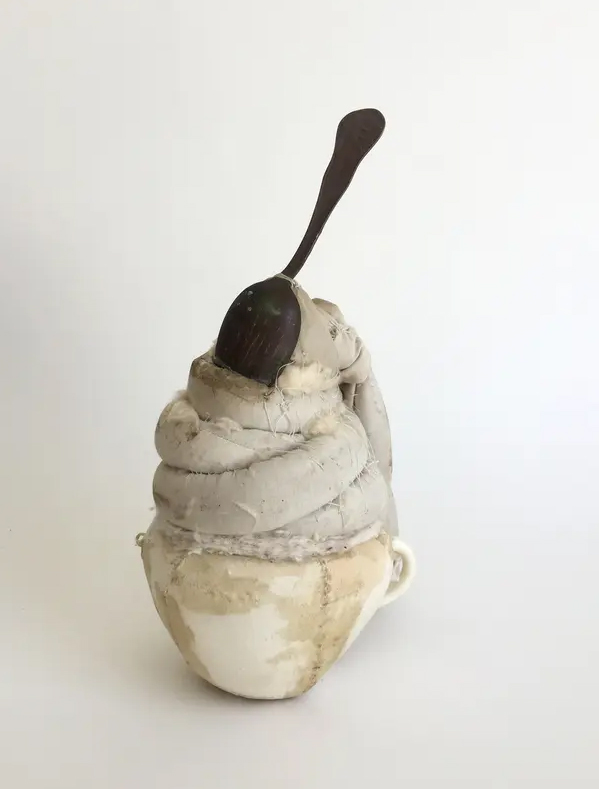Janice Redman in The Brooklyn Rail
Janice Redman: Rough Alchemy

The elevator takes forever, so you walk up four flights of stairs to Bookstein Projects, where Lori Bookstein and Joseph Bunge, her partner and gallery director, smile discreetly as you pass. In Bookstein’s “Gallery II,” a small, somewhat confined space, they’ve taken a leap of faith with the first New York showing of fabric artist Janice Redman. Nearly twenty modified found objects are arrayed horizontally on the wall, set on shelves, or placed on the floor. Encased, held: that was my experience of Redman’s art and of the space in which I viewed it. She wraps her objects with such intensity that I was startled and then riveted, simply staring in disbelief.
A specific object—a spoon or cup, say—acquires multiple formal identities through masking, burrowed deep into its wrapping. A teacup handle, for example, peers out from fabric wound round it and filled with batting, creating lumpy channels of material that are then stitched together. Embedded in the tactile softness of cotton, the necks, handles, and finials of utensils, rendered mute and unusable, project from wrapped balls of swaddling, the residual batting still clinging in clumps like so much detritus. There are further disruptions of use value: the blade of a canoe paddle is perforated with holes, a chair is piled with “pillows”—sandbags painted, like the chair, in a graying noncolor. This stack presses on below the seat and is then surrounded by variously sized rocks of a similar color. The entire assemblage is violated by a large central hole, an opening that wreaks havoc on the very idea of “chair.”
Beyond aesthetic pleasure, Redman’s work sparks a frisson of recognition. Perhaps meaning comes situationally, from the small, rather narrow room, painted white, confining, staged, and populated by these various dramatis personae. In their muteness, each figure (the anthropomorphic tilt is unavoidable) whispers its secrets. Rather than project onto the object, the viewer instead senses presences within them, like revenants locked down by twists, coils, and stacks of tactility. Looped into their interstices, the viewer can only submit.
– Patricia L Lewy
To read the full article in The Brooklyn Rail, visit here.

